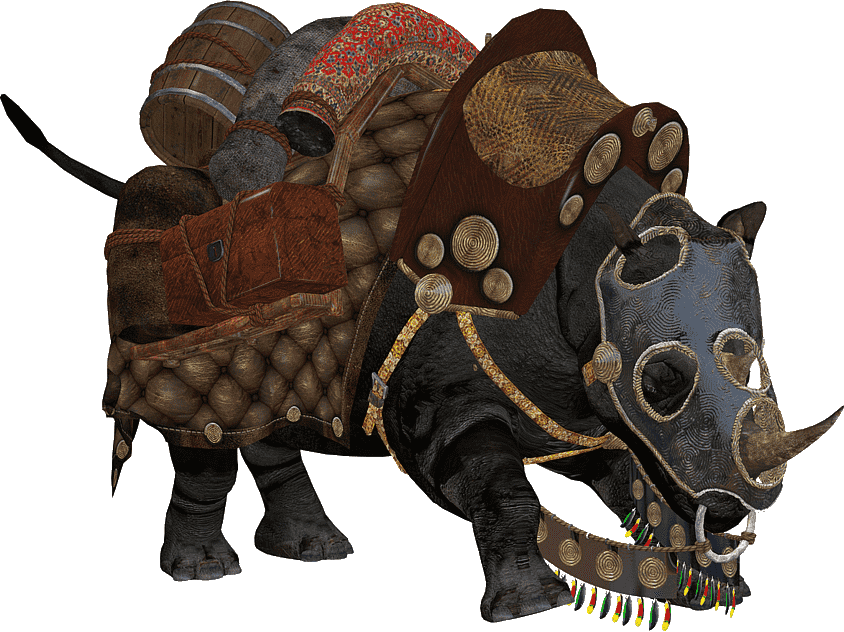Syrosyrus Rhinoceros
The hills and plains of inner Cryhton are home to a wild and powerful animal, the rhinoceros. No where else in the world can a rhinoceros be found. They are strong creatures, but capable of being domesticated.
Icon of Power
These wondrous animals are seen by the non-cityfolk as the superlative animal. Many pre-orc invasion peoples used their symbol in their banners. During those orc wars, these Belagoe warlords mounted rhinoceros to take into battle, strapping blades to their horns and feet. They were eventually defeated, but the orcs took a liking to rhinoceros cavalry and use them to this day. Some orc leaders today use epithets such as "the Rhino" or similar to conjure its power.Basic Information
Anatomy
The rhino's most distinguishing features are its gray or brown shaggy skin and its prodigious horn. Their legs are strong and wide, but powerful. They stand between 4 and 7 feet high at their back. They have peripheral vision with eyes on either side of their long heads. Short ears and tails protrude from their skull and buttocks, respectively.
Genetics and Reproduction
Rhinos carry their young until birth. Genetic differences are passed between parents, so larger rhinoceros will typically give birth to larger rhinoceros. A rhino can only carry one calf at a time, though twins have been observed.
Growth Rate & Stages
Upon birth, the calf is a quarter the size of its parent. After 4 months it is mostly full grown. By 1 year it is entirely grown, but not yet ready to reproduce. At the 2 year mark a rhinoceros is typically ready to mate.
Ecology and Habitats
Rhinos prefer the warm plains and hills of Cryhton, not venturing near the coast and keeping inland. Some are known to visit the foothills of the Mountaines, and these ones have thicker hair after spending time there for dozens of generations.
Dietary Needs and Habits
Grass and woody shrubs are a staple among the rhinoceros. They are entirely herbivores.
Behaviour
Syrosyrus rhinos are known to be territorial. When migrating this leads to many accidents as the rhinoceros believe anything in their way is a challenge. Unfortunate homesteads or small villages are attacked if not demolished. Larger towns and cities are safe as the rhinoceros simply go around.
When threatened, rhinos flap their tails in an up down motion and shake their heads, thrusting their horns high in a show of dominance. They have killed mortals before, without much provocation other than being in the way of their migration.
Outside of migration and mating season, rhinos are typically calm and agreeable.
Additional Information
Domestication
Domesticating the Syrosyrus rhinos is not easy, and indeed, hardly anyone breaks in these rhinos. All currently beast-of-burden rhinos are from generations of domesticated stock. These domestic cousins have evolved slightly to be less hostile and have less pronounced horns but with sturdier legs and frame to handle cargo and people.
Perception and Sensory Capabilities
In addition to their wide field of vision, rhinoceros are known to smell water and often travel to a water course instinctively upon smelling it.
Conservation Status
Syrosyrus rhinos are of least concern. They are prolific during mating season and during their migrations.
Geographic Distribution




Comments